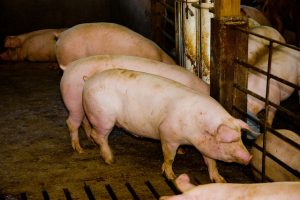Bacterial resistance to last resort antibiotics found on swine farm
 Photo credit: United Soybean Board
Photo credit: United Soybean Board
Researchers from Ohio State University have discovered bacteria with resistance to antibiotics known as carbapenems—considered to be the last line of defense—on a U.S. swine farm. Researchers took samples from the operation four times over five months in 2015 to screen for carbapenem-resistant bacteria called Enterobacteriaceae (CRE). While carbapenems antibiotics are restricted for use in livestock operations, other antibiotics that work via mechanisms similar to that of carbapenem are allowed. One such antibiotic—ceftiofur—is commonly administered to piglets. Researchers believe that exposure to ceftiofur likely led to the proliferation of bacteria resistant to multiple antibiotics, including carbapenems. “While most people today do not have direct livestock exposure, enteric flora from livestock commonly contaminate fresh retail meat products that are distributed over wide geographic areas. Thus, if CRE are present in food animal populations, a large number of consumers may be exposed through the food chain, resulting in a critically important emerging food safety issue…. The implication of our finding is that there is a real risk that CRE may disseminate in food animal populations and eventually contaminate fresh retail meat products,” the researchers wrote.

